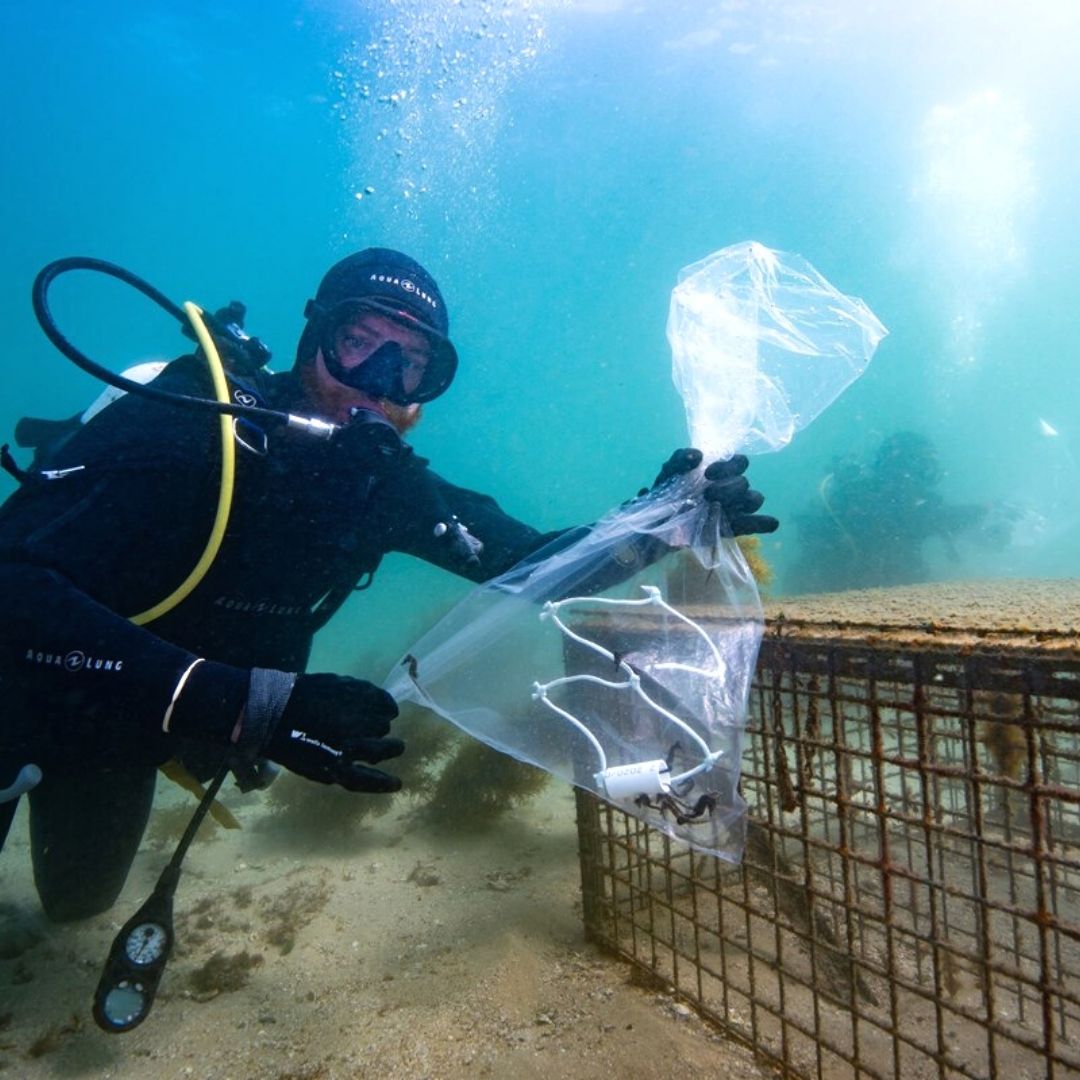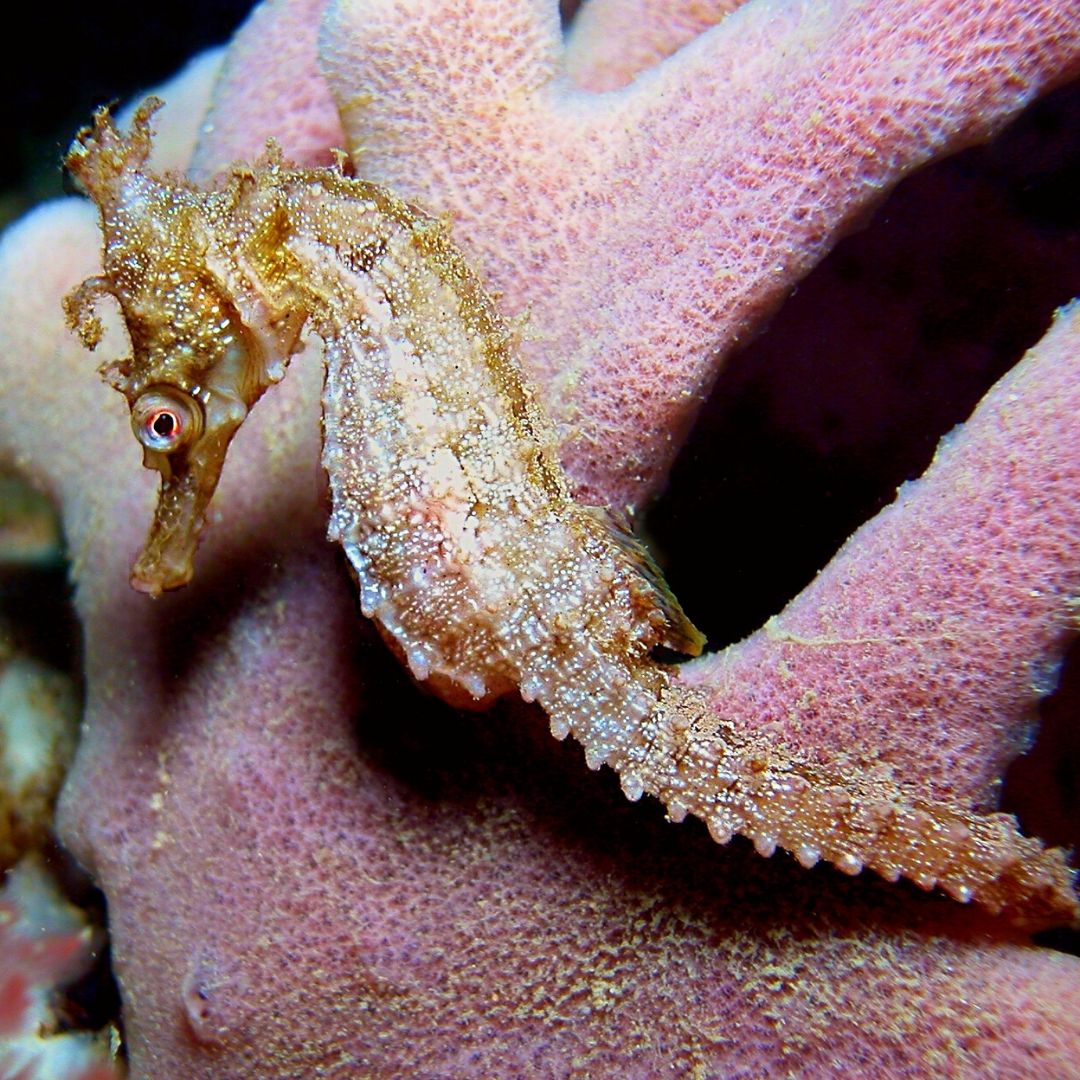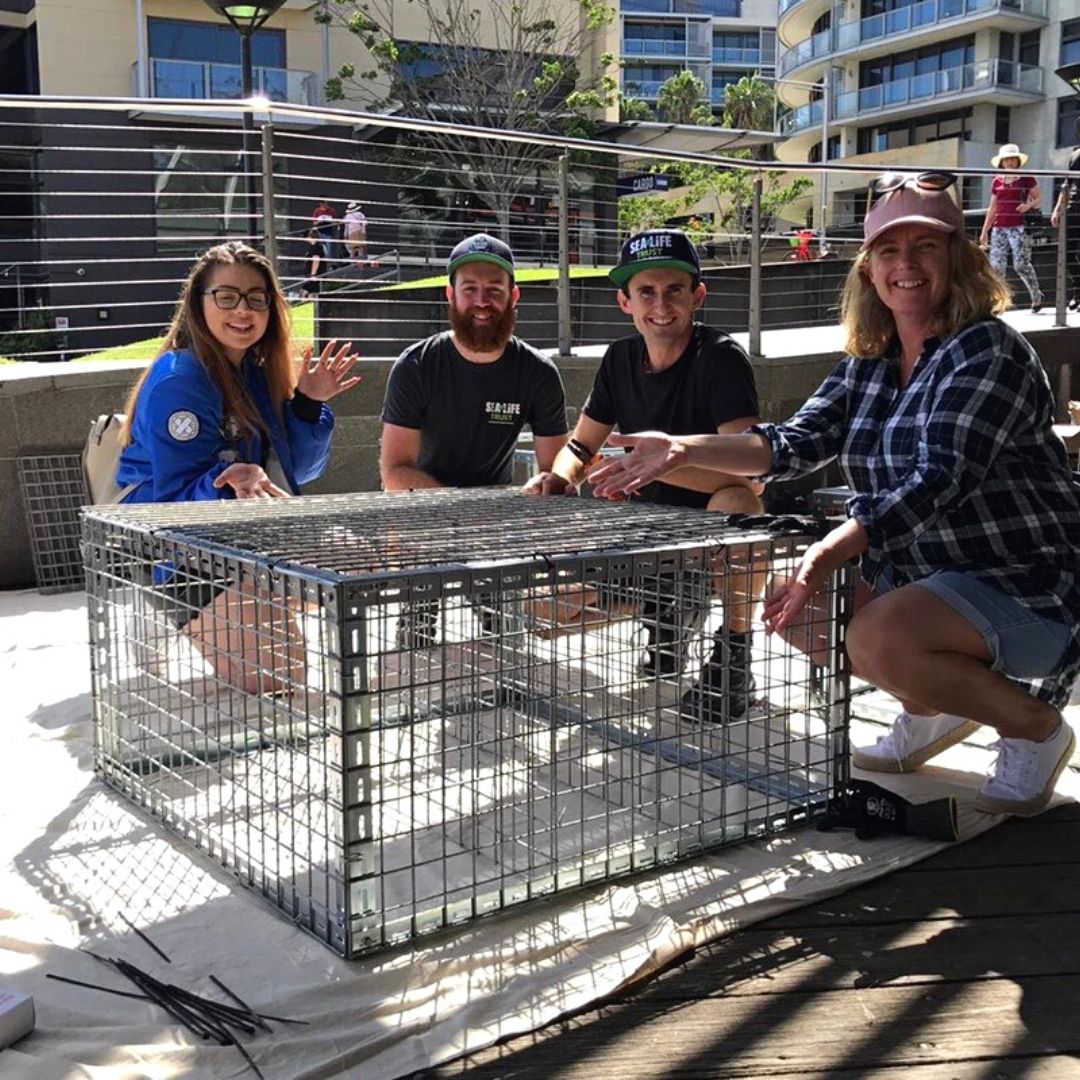Fantastic news! Over 140 endangered White’s Seahorses have been released into Sydney Harbour’s ‘SeaBnBs’ as part of a multi-year seahorse recovery program.


Over 140 Seahorses ‘Checked In’ To Seahorse Hotels!
Since 2019, SEA LIFE Sydney Aquarium and the NSW Department of Primary Industries (DPI) Fisheries have placed 27 ‘Seahorse Hotels’ in the Sydney Harbour. So far, these SeaBnBs have been hugely successful in protecting the tiny aquarium-bred seahorses from harm!
White’s Seahorse, otherwise known as the ‘Sydney Seahorse’, is Australia’s only endangered seahorse species. Curator at SEA LIFE Sydney Aquarium, Laura Simmons, says the release of 140 White’s Seahorses is a major milestone in the long-term effort to recover the species. “We’re now in year two of a multi-year project that aims to recover the Endangered White’s seahorse. We hope they’ll go on to breed all around Sydney Harbour to help White’s seahorse flourish”.


Recovering The Endangered White’s Seahorse
White’s Seahorses are found in shallow waters on the East Coast of Australia, but they’re pretty abundant in Port Stephens, Sydney Harbour and Port Hacking. Their natural habitats consist of sponge gardens, seagrass meadows and soft corals — but sadly, their habitats are often destroyed by the installation of boat moorings, boat anchors, man-made swimming nets, and extreme sand movement due to boats.
Sydney Harbour’s population pressures have contributed to a massive decline in the White’s Seahorse — but now, Sydney’s waters are likely to see the revival of the endangered seahorse species! This multi-year breeding program is a massive collaborative effort between SEA LIFE Sydney Aquarium, DPI Fisheries, Ocean Youth, the Gamay Rangers, UTS, SIMS, and a range of generous supporters, such as Taylors Wines.


What Are ‘SeaBnBs’?
Seahorse Hotels, or SeaBnBs, sound pretty adorable, right? Inspired by lost crab traps, these seahorse hotels start as artificial structures then grow into natural habitats once they are placed in the marine environment. Over time, they become the perfect home for seahorses due to the natural growth of sponges and algae! The SeaBnBs allow the seahorses to mature and breed in a safe environment.
In June, the SEA LIFE Sydney Aquarium team placed 18 seahorse hotels in Little Manly and Delwood Beach in anticipation of the release of the 140 baby seahorses. In this adorable video released by SEA LIFE Sydney Aquarium, we can see the exact moment the diver releases the seahorses into the seahorse hotel. Their little tails clinging onto the structure is pretty cute, if you ask us!


Donate To Create More SeaBnBs!
This fantastic seahorse recovery program requires our help. To provide happy homes and restore vital habitat for endangered seahorses in Sydney Harbour — the Sydney Institute of Marine Science and Taylors Wines have created a SeaBnB Fundraiser, which has already raised $25k! Their goal is to raise $150k of much-needed funds to restore White’s Seahorse populations and habitats.
According to DPI Fisheries’ Senior Marine Scientist, Dr. David Harasti, “just last year the White’s seahorse was listed as an Endangered species in NSW, and this collaborative project is helping provide artificial homes for seahorses to live on in Sydney Harbour. The captive breeding program and Seahorse Hotels initiative is providing hope for this iconic and mythical marine species and will hopefully contribute to their numbers increasing in the wild”.
We’re thrilled that this seahorse recovery program is seeing so much success! As Australia’s only endangered seahorse species, the White’s Seahorse must be protected to ensure its survival. Thanks to the collaborative effort between SEA LIFE Sydney Aquarium, DPI Fisheries, UTS, SIMS, Ocean Youth, Gamay Rangers, and all their wonderful supporters, it’s likely that the White’s Seahorse will thrive in Sydney Harbour for generations to come.
To learn more about the Sydney Seahorse Breeding Project and to discover ways you can help, please visit SEA LIFE Sydney for more info.
Love hearing about marine conservation? Check out our Eco News category and the blogs below for more interesting projects!

